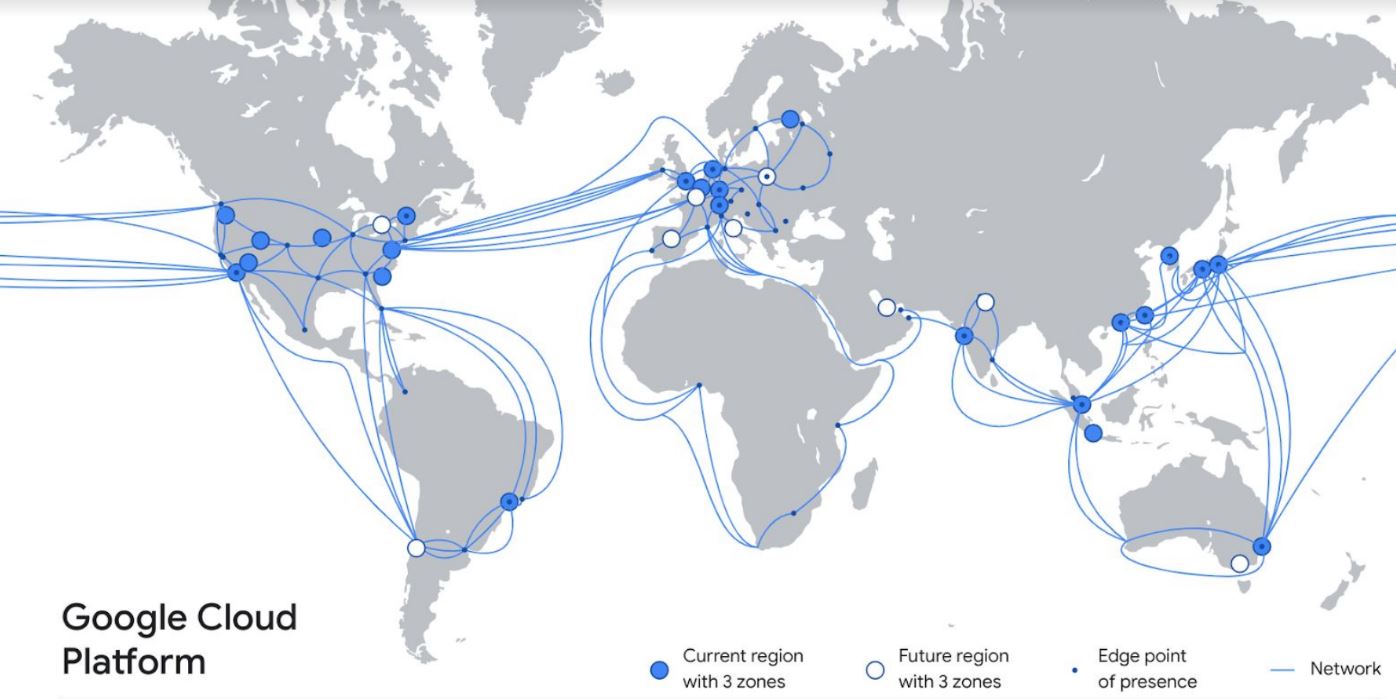 CLOUD
CLOUD
 CLOUD
CLOUD
 CLOUD
CLOUD
Google LLC today announced a series of upgrades to its global infrastructure services, giving customers more ways to connect to its cloud computing services. It also announced more deployment options for its cloud, plus new functionality for customers.
The announcements were made by Brad Calder, Google Cloud’s vice president of engineering, in a blog post today as part of Google’s ongoing Cloud Next OnAir online conference that runs through Sept. 8.
The first news, announced early today, was that Google has commissioned a new subsea cable, called Grace Hopper, that will run between the United States, the United Kingdom and Spain when it goes online in 2022. Calder said it will be the first transatlantic cable to go live since 2003, and will deliver 16 fiber pairs of capacity to help connect the 24 cloud regions that Google now operates, alongside its 144 network edge locations.
Along with the new subsea cable comes a new, more secure way for customers to connect to Google Cloud. Calder said the new Private Service Connect option provides a more “service-centric” approach to networking that abstracts the underlying infrastructure.
“Private Service Connect creates service endpoints in consumer Virtual Private Connections that provide private connectivity and policy enforcement, so you can easily connect services across different networks and organizations,” Calder said. “With Private Service Connect, traffic is not exposed to the public internet; customers can access services directly and securely over Google’s global network.”
Calder said Private Service Connect can be paired with Google’s new Service Directory, which is a service that was launched in March to help cloud customers simplify their service management and operations. The idea is that customers can use Private Service Connect alongside Service Directory to securely connect and manage their services at scale.
“As enterprises use Private Service Connect to access more first- and third-party services, Service Directory helps engineering teams to publish and discover them,” Calder explained.
Google also announced some updates to its Network Intelligence Center, which is a central platform for customers to monitor, verify and optimize their networks. Calder said the Network Intelligence Center has gained two new modules, including a Performance Dashboard that’s now generally available and offers real-time visibility into packet loss and latency at a per-project level. Also new: Firewall Insights in beta, which adds more intelligence and proactive management features for network security teams.
In addition, Calder said, Google’s Cloud CDN content network delivery service now supports serving content from on-premises data centers and other public clouds, in addition to Google’s own cloud.
Moving away from the network, Calder said Google is keen to help customers migrate more of their workloads and applications away from their on-premises data centers, and other clouds, to its own cloud. To that end, Google said its Rapid Assessment and Migration Program, known as “RAMP,” is now publicly available.
“Built on feedback from customers and partners, RAMP offers end-to-end migration guidance and training, as well as incentives to help you offset a significant portion of your migration cost,” Calder said. “RAMP also brings together a full suite of tools for every phase of the migration journey to accelerate the process.”
Google is also adding more deployment options for its E2 family of general-purpose virtual machines. It’s now offering machine types with up to 32 virtual central processing units in all of its cloud regions. Previously, customers were limited to just 16 vCPUs, Calder said.
On the storage side, Google said it’s extending the functionality of its Persistent Disk storage service, which provides reliable, high-performance block storage for cloud workloads. The company has added more storage options that will enable customers to balance performance with costs, according to their needs.
The options include a new Balanced PD tier that Google says is suitable for most enterprise applications and offers the best price per gigabyte. There’s also a new Performance PD tier for those seeking the best possible price per input/output operations per second, which Google said is ideal for performance sensitive workloads such as databases and persistent cache. Then there’s a new Extreme PD SKU tier, which Google said is suited to workloads that need the best possible performance, such as SAP HANA and other large in-memory databases.
“This strategy is all about tailoring your storage to your workload, so we can deliver on your price and performance needs,” Calder said.
Finally, the company is updating its Google Cloud Armor service that helps customers to protect their websites from exploit attempts and distributed denial-of-service attacks. Calder announced the launch in beta test mode of Cloud Armor Managed Protection Plus, which is a bundle of easy-to-use products and services that can help protect internet-facing applications, available for a monthly subscription fee.
THANK YOU